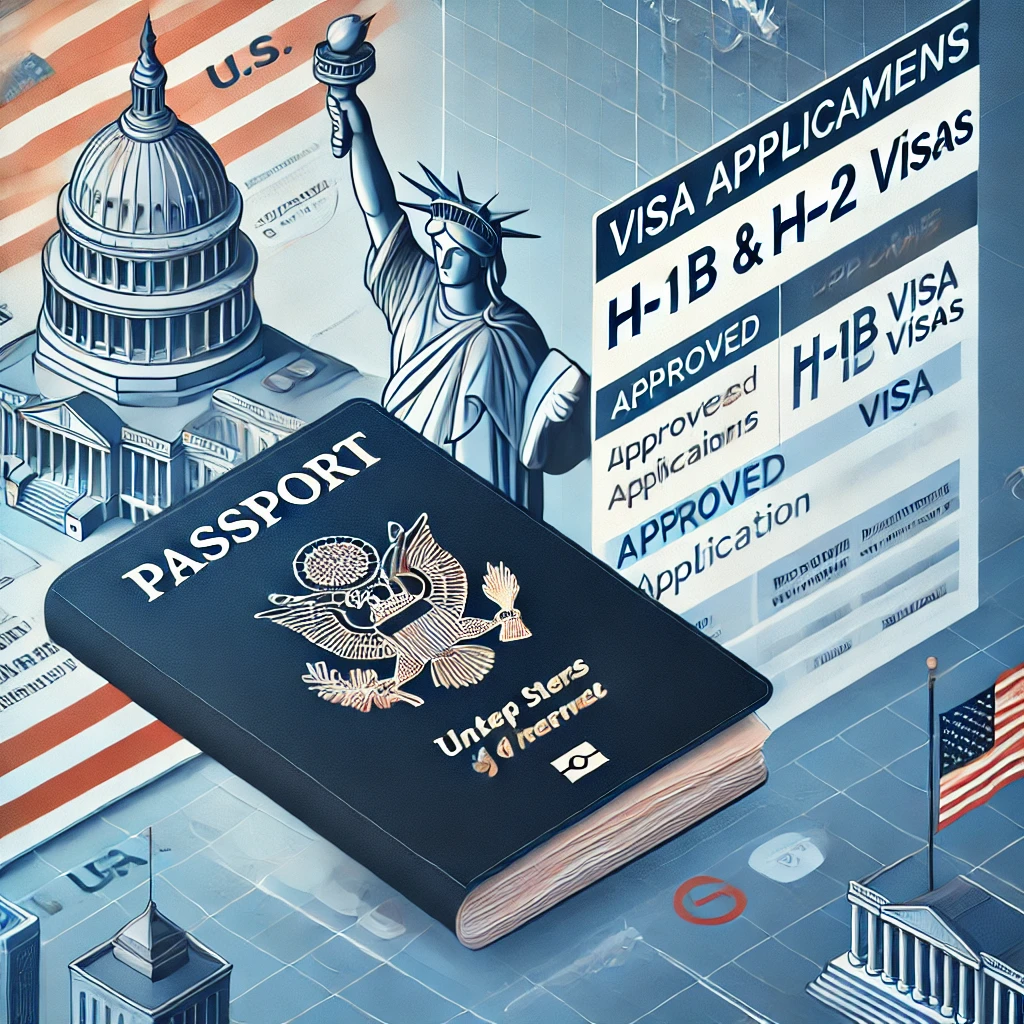Introduction
Big changes are coming to the U.S. immigration landscape, with the U.S. Citizenship and Immigration Services (USCIS) finalizing rules for H-1B and H-2 visa programs. Effective January 17, 2025, these updates include adjustments to eligibility requirements, processing procedures, and the revised Form I-129, used to petition for nonimmigrant workers. These changes aim to streamline the visa system while addressing workforce needs, but they have sparked widespread discussion among employers, workers, and advocacy groups.
Key Takeaways
1. Effective Date for New Rules:
The final rules for H-1B and H-2 visa programs, along with the updated Form I-129, will take effect on January 17, 2025.
2. Enhanced Worker Protections:
The new rules emphasize stronger protections for foreign workers, including clearer definitions of employment terms and improved anti-fraud measures.
3. Updates to H-1B Visa Program:
Changes to the H-1B program include refined criteria for specialty occupations and enhanced employer accountability.
4. Streamlined H-2 Visa Process:
The revised rules for the H-2 program simplify seasonal worker applications while maintaining safeguards to protect U.S. workers.
5. Revised Form I-129:
The new form reflects these regulatory updates and aims to simplify the filing process for employers.
What Are the H-1B and H-2 Programs?
The H-1B and H-2 visa programs play critical roles in the U.S. economy:
- H-1B Visa: Designed for highly skilled foreign professionals, particularly in fields like IT, engineering, and healthcare. It allows employers to hire foreign workers for specialized roles requiring a bachelor’s degree or higher.
- H-2 Visa: Split into H-2A (for agricultural workers) and H-2B (for non-agricultural seasonal workers), this program addresses labor shortages in industries such as farming, construction, and hospitality.
Key Changes to the H-1B Program
The final rule introduces several significant updates:
- Specialty Occupations: The revised definition clarifies what qualifies as a specialty occupation, ensuring that only genuinely skilled positions are eligible.
- Employer Obligations: Employers will face stricter requirements to demonstrate that they are hiring H-1B workers for legitimate roles, with enhanced transparency measures to prevent exploitation.
- Anti-Fraud Provisions: Increased scrutiny of applications aims to reduce fraudulent filings and ensure compliance with visa conditions.
These updates reflect a push to balance the needs of U.S. employers with the protection of domestic and foreign workers.
Streamlining the H-2 Visa Process
The H-2 program changes focus on simplifying application procedures for employers while maintaining safeguards to protect U.S. workers. Key adjustments include:
- Simplified Filing: Employers will benefit from a more straightforward application process, reducing administrative burdens.
- Worker Protections: Enhanced oversight ensures that foreign workers are treated fairly and not used to undercut domestic labor markets.
Revised Form I-129
The updated Form I-129 aligns with these regulatory changes, providing a clearer and more streamlined format for petitioners. Employers will need to familiarize themselves with the new form to ensure compliance with updated filing requirements.
Implications for Employers and Workers
For employers, the changes bring both opportunities and challenges. The clarified rules and streamlined processes could reduce delays and improve application outcomes, but stricter compliance requirements may increase administrative responsibilities.
For foreign workers, the new rules offer stronger protections and clearer pathways for employment, but the tightened eligibility criteria could make it harder to secure visas in some cases.
Opinion: Striking a Balance
In my view, these updates represent a necessary step toward modernizing the U.S. visa system. By addressing fraud and exploitation while streamlining processes, the new rules aim to create a fairer and more efficient system for all stakeholders.
However, successful implementation will depend on clear communication and robust support for employers and workers navigating these changes. Striking the right balance between protecting domestic workers and meeting labor demands will be key to the success of these reforms.
Conclusion
The final rules for H-1B and H-2 visa programs, effective January 17, 2025, signal a significant shift in U.S. immigration policy. By clarifying eligibility criteria, enhancing worker protections, and simplifying processes, the changes aim to address workforce needs while maintaining fairness and transparency. As employers and workers prepare for these updates, the focus must remain on creating an immigration system that supports economic growth and upholds the rights of all participants.
#USA
Source – uscis.gov: H-1B Final Rule, H-2 Final Rule, and Revised Form I-129 Effective Jan. 17, 2025










